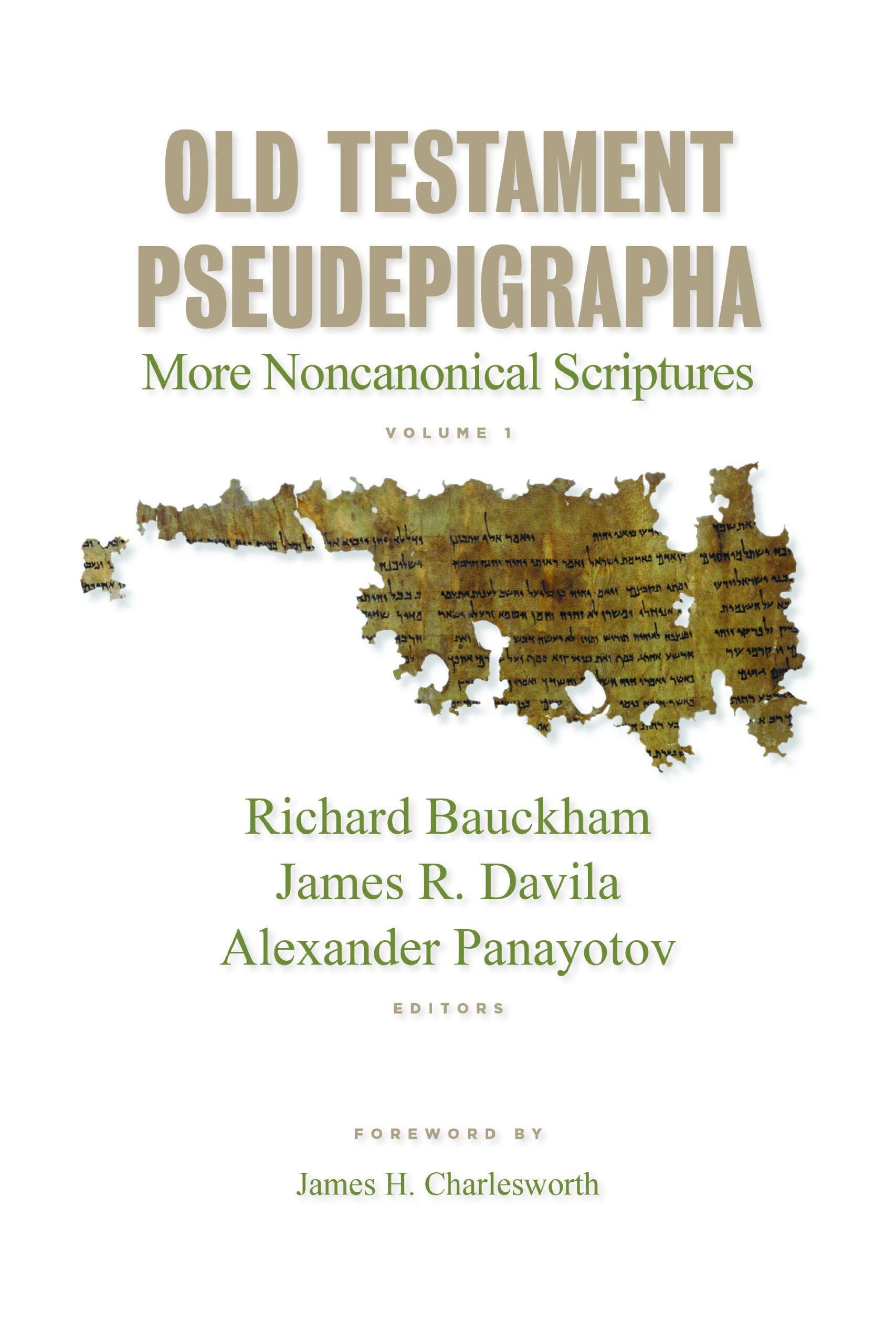James H. Charlesworth, the Princeton Professor and editor of the standard two volume The Old Testament Pseudepigrapha, noted that the recently edited volume, Old Testament Pseudepigrapha: More Noncanonical Scriptures Volume I, is “…high on the list of the most important publications in biblical studies over the past twenty-five years” (xi). Richard Bauckham, James R. Davila, and Alexander Panayotov have together produced an exciting addition to the area of Old Testament Pseudepigrapha studies.
Why another edition of the Pseudepigrapha?
The intention behind this project was never to produce another printing of the Old Testament Pseudepigrapha. Instead OTP functions as an addition to, not a re-publication of, Charlesworth’s volume. Additionally, the lack of a definite article in the title is intended to convey the point that OPT is not an exhaustive collection (xxvii). Rather, this volume seeks to supplement the study of the Pseudepigrapha by offering a set of texts that are currently not found in other recent collections of pseudepigraphical works.
What texts were included and why?
In the Introduction chapter, Bauckham and Davila set forth the criteria used to determined the text selection for this projection. First, they limited the corpus to texts that can reasonably be dated prior to the rise of Islam in the early seventh century (xxviii). Second, this volume includes texts of any provenance, whether Jewish, Christian, or indigenous polytheistic (although determining provenance is no easy task). Third, the editors exclude texts that fit within other coherent and traditional collection of works (Dead Sea Scrolls, Apocrypha, Coptic Gnostic works, Nag Hammadi library, etc). Fourth, as already mentioned, this volume does not publish texts that are already printed in Charlesworth (or Sparks) unless there is new manuscript data that demands a reconsideration of the text. Fifth, the editors have only included texts that have manuscripts dated well after the seventh century if preservation of the earlier material can be determined. Sixth, the editors depart from Charlesworth’s approach to categorization. Instead of listing the works in terms of genre, they (following Fabricius and Sparks) list the texts by name of the relevant Old Testament figure as they appear in the Old Testament chronological order (xxx).
Why is the Pseudepigrapha important?
First, this volume should be of interest for anyone interested in serious study of the Pseudepigrapha (cf. also The Journal for the Study of the Pseudepigrapha). In the words of the editors of OTP, “[these texts] present us with the sacred legends and spiritual reflections of numerous long-dead authors whose works were lost, neglected, or suppressed for many centuries (xxxviii).” Secondly, the Pseudepigrapha is not only a fascinating background for the New Testament, it is also a great resource for the reception history of the Hebrew Bible. For an introduction to some of the major texts within the Pseudepigrapha and their significance for New Testament studies, see Exploring Jewish Literature of the Second Temple Period: A Guide for New Testament Students.



One comment